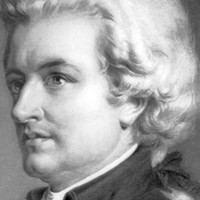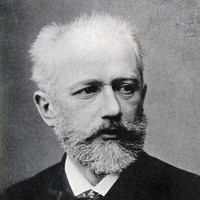Mozart’s Clarinet Quintet

Sponsored By
- May 31, 2019

- June 2, 2019


Sponsored By



Mozart’s Clarinet Quintet is the fruit of a long friendship — and a love both for the instrument and its player. Clarinetist Anton Stadler was a fellow Freemason, and he seems also to have been an astounding performer. One contemporary wrote of him, “I would not have thought that a clarinet could imitate the human voice so deceptively as you imitate it. Your instrument is so soft, so delicate in tone that no one who has a heart can resist it.” In this quintet, and in his Clarinet Concerto, Mozart offered his friend the richest of gifts: two unsurpassed showcases for his instrument.
This serene piece was Mozart’s contribution to an annual Christmas benefit concert for widows of Viennese musicians. At the premiere, on December 22, 1789, he joined Stadler on stage, playing the viola part. Even though he wrote it in turbulent times — in September 1789, the French Revolution was sending shock waves around Europe, especially in Imperial Vienna — Mozart seems simply to have shut the door on the turbulent world and turned to a place of great calm and beauty.
It would be fascinating to read an interview with composer and soloist, discussing in what ways this piece reflects Stadler’s unique style. The qualities the eyewitness observed — “delicate in tone” and “like the human voice” — could also describe Mozart’s music. Most of his quintets were written for strings alone; only the Quintet for Piano and Winds and this Clarinet Quintet stand apart. In both pieces, the featured instruments are treated as a first among equals. They behave mostly like concerto soloists, but can take a back seat to allow other instruments to flower. As Donald Tovey noted, “[The clarinet] . . . is not intended to blend with the strings, but nowhere gives a more intense pleasure than where it behaves as an inner part exactly like the others.”
Mozart presents the clarinet in many guises. There is something almost comic about the yodeling solo in the second trio of the Menuetto and, bearing in mind Stadler’s “singing quality,” Mozart wrote a beautiful solo aria for him in the Larghetto — music that could easily be sung, rather than played.
Svend-Einar Brown ©2006

(Duration: 20 min)
In 1886, when the Saint Petersburg Chamber Music Society awarded Pyotr Ilyich Tchaikovsky an honorary membership, he promised to write a new work for them, but it ended up taking six years and many course corrections before their score was ready. Around the time he made his first sketches in the summer of 1887, he confessed his pernicious self-doubt in a letter, lamenting, “I’m beginning to fear that I am losing my powers of composition, and becoming angry with myself.”
Picking up the score again in 1890, which he had decided to construct as a string sextet in the mold of Johannes Brahms, he wrote to a fellow composer that he found it “terribly difficult working in this new form; it seems that rather than writing for six voices, I am, in essence, composing for the orchestra, and only then arranging it for six string instruments.” He gathered musicians to perform a draft that he appraised as “astonishingly bad in all respects,” and he put it down again until a quiet few weeks in Paris during the winter of 1891–92. Finally happy with the score, Tchaikovsky gave it the fond title Souvenir de Florence, a tribute to the city where, early in 1890, he jotted down the melody that would become the basis of the slow movement.
Souvenir de Florence makes an arresting entrance, launching immediately into a melody that starts with an unstable harmony and a crunchy four-note chord attacked fortissimo by the first violin. This fast and spirited opening movement in the key of D-minor turns out to be more frisky than fierce, maintaining a dance-like lift in its three-beat pulse.
After a tapering introduction, the slow movement presents the Florence-born theme, played dolce cantabile (sweet and singing) by the first violin over effervescent plucking, a texture that approximates the character of an Italian mandolin or guitar accompanying a love serenade. In a letter to his contact at the Chamber Music Society, Tchaikovsky wrote that this movement should be “played with great fire and passion.”
Traces of folksong color the scherzo as well as the lively finale. Tchaikovsky used the full resources of the sextet to craft these themes into more than just memorable tunes, amassing rustic textures and sophisticated layers of counterpoint on the way to a thrilling conclusion. Alongside his symphonic swan song from the next year, the Symphony No. 6, Souvenir de Florence stands as the pinnacle of what Tchaikovsky was able to achieve when he married his abundant gift for melody with a hard-earned mastery of formal structures.
Aaron Grad ©2023
Get driving directions and find nearby parking.
Find dining options close to the venue.
View seating charts to find out where you'll be seating.
Get driving directions and find nearby parking.
Find dining options close to the venue.
View seating charts to find out where you'll be seating.
